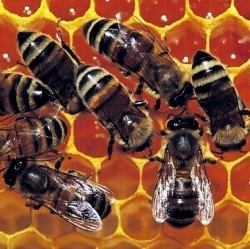
Bee colonies are in decline worldwide. A team has come together to engineer a response to the problem, an open-source hive that can help house, track and understand the cycles movements of these vital members of the eco-system.
The open-source beehive project was launched on Indiegogo last month and has managed to generate more than twice its original funding goal. Backers can opt to download the plans to create two different styles of hives via CNC fabrication (the different hive models can be "printed" using a single standard sheet of plywood in about 30 minutes), or choose a pre-fabricated flat-pack hive.
Assuming all goes without a hitch, delivery is estimated to start as early as this month. Once assembled, the open-source beehive is meant to provide a "low-stress environment that allows bees to thrive."
Despite its relatively simple design, this "intelligent" beehive also includes sensors that track the temperature, humidity, movements and even the mood of the bees. The information will be used to assess the health and behavior of the colony.
As it is collected, the data can be streamed via an open-source sensory kit, called the Smart Citizen kit, to an online open-data platform, which also tracks geo-location. In areas where no Wi-Fi is available, this information for individual hives can also be stored on an SD card and transmitted at a later date.
The team behind the open-source beehive includes members from FabLab Brussels, FabLab Barcelona, the University of Barcelona, Sony Computer Science Lab, Paris and participants from Denver, Colorado.
It is hoped that by encouraging the public to download and erect these bee-friendly hives and by feeding the information to the open-data platform, a recovery in bee colonies can be encouraged and some of the questions around declining populations can start to be answered. The makers contrast their small, low-stress hives with large industrial farms that have been created to maximize crop production for commercial sale.
